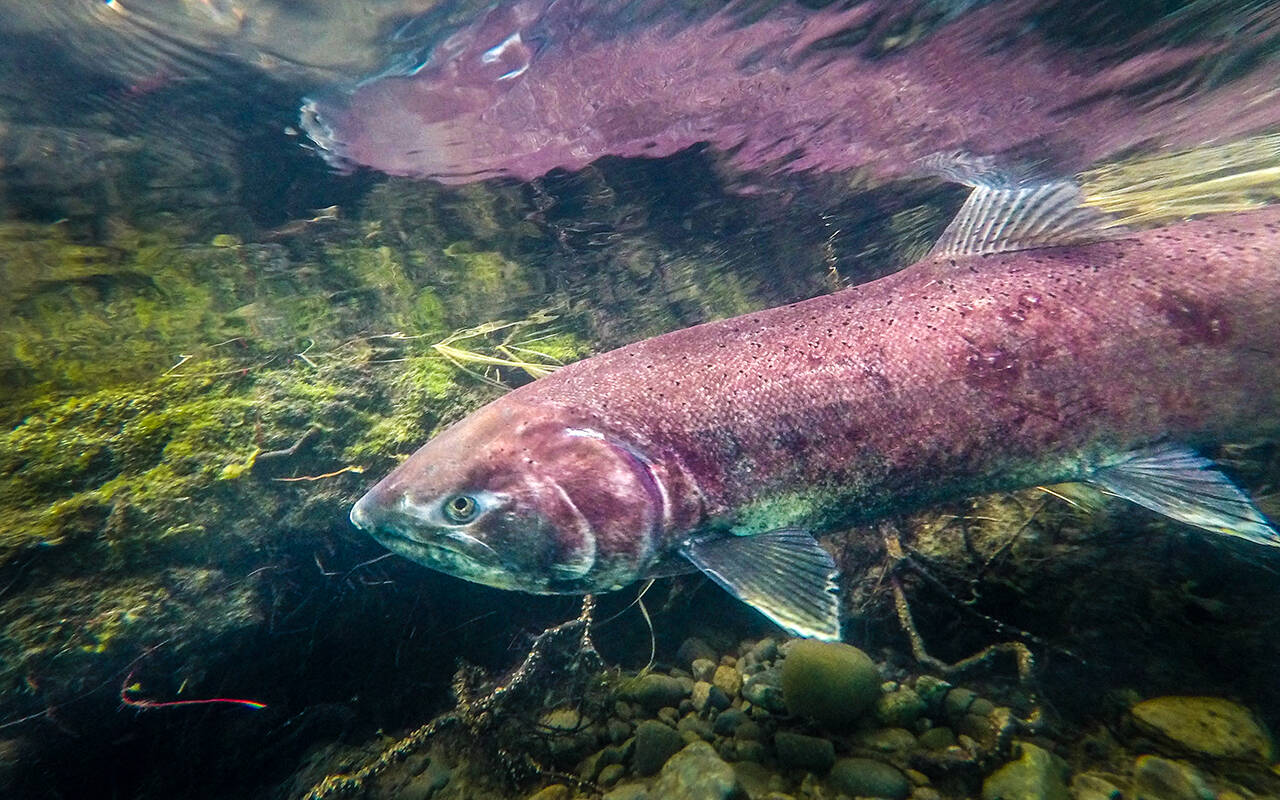Sport fishing for chinook salmon is once again closed for the Skeena River watershed, announced the Fisheries and Oceans Canada (DFO) on May 24.
The closure includes the rivers and lakes in the Skeena region except for the Kitimat River and the Nass River watersheds.
DFO expects fewer than 22,000 chinook salmon will return to the Skeena this year which is only about one-fifth of the long-term historical average return, said Greg Knox, executive director at SkeenaWild Conservation Trust.
These salmon have been returning at really low rates the last few years and the closures are needed to protect the stocks and rebuild them, Knox said.
He adds that it’s poor ocean conditions that are driving the low stock returns. Things such as warmer water in the North Pacific — which translates to less food for salmon — and floods and droughts in the rivers and streams.
“Unfortunately, the sport fishery is getting closed but the department is not really taking any other action to protect Skeena chinook.”
Even with the closure, Knox is concerned over-harvesting impacts on chinook stocks beyond the sport fishery, such as chinook fishing in southeast Alaska.
SkeenaWild Conservation Trust launched a campaign this year to pressure Alaska to reduce its interception of Skeena salmon stocks.
“Currently they harvest more salmon than we do,” Knox said. “We’ve cut back fisheries to try to protect and rebuild our salmon stocks and Alaska has maintained their high harvest levels, on our populations and in some cases, increased harvest. For example, this year they’ve increased their chinook harvest.”
Local Indigenous food fisheries are also impacting chinook levels, Knox believes, and feels that with such low predicted levels of chinook returning DFO should be limiting all harvest.
Jesse Stoeppler, co-executive director for Skeena Watershed Conservation Coalition, said the importance of healthy fish populations to any Indigenous nation or group cannot be overstated.
“The direct impacts are measurable in the health of the land, and therefore the people. That can be reflected in culture, language, passing of knowledge and, probably as important as ever, in local-level food security or food sovereignty.”
He explained how the health of fish is directly linked to and reflected in the health of the forest.
“I know a lot of Indigenous nations believe in the fact that there is a strong connection between the people and the land, and the land and the people being symbiotic… Aside from that, it’s never been, to my knowledge, about the extraction of such a resource, it’s cherished, and it’s so needed. And that is something that we can then see when we talk about stewardship.”
Stoeppler acknowledged that a lot of fish being caught in Alaska was proven to be genetically connected to rivers and watersheds along the coast, including from B.C. He thinks it’s too easy to just point a finger and put the blame on someone else though.
“We have, as residents of BC, I think we have a lot of fault to find within our own province and at our doorstep. The writing has been on the wall for a very long time. And we’re now getting to the nitty-gritty of the consequences and that’s when this captures a lot of attention because it affects so many.”
The DFO stated the regulations are in response to “ongoing concerns for North Coast and Skeena Chinook.”
READ MORE: Skeena River First Nations outraged by Alaskan fisheries interception of salmon
kaitlyn.bailey@blackpress.ca
Like us on Facebook and follow us on Twitter

